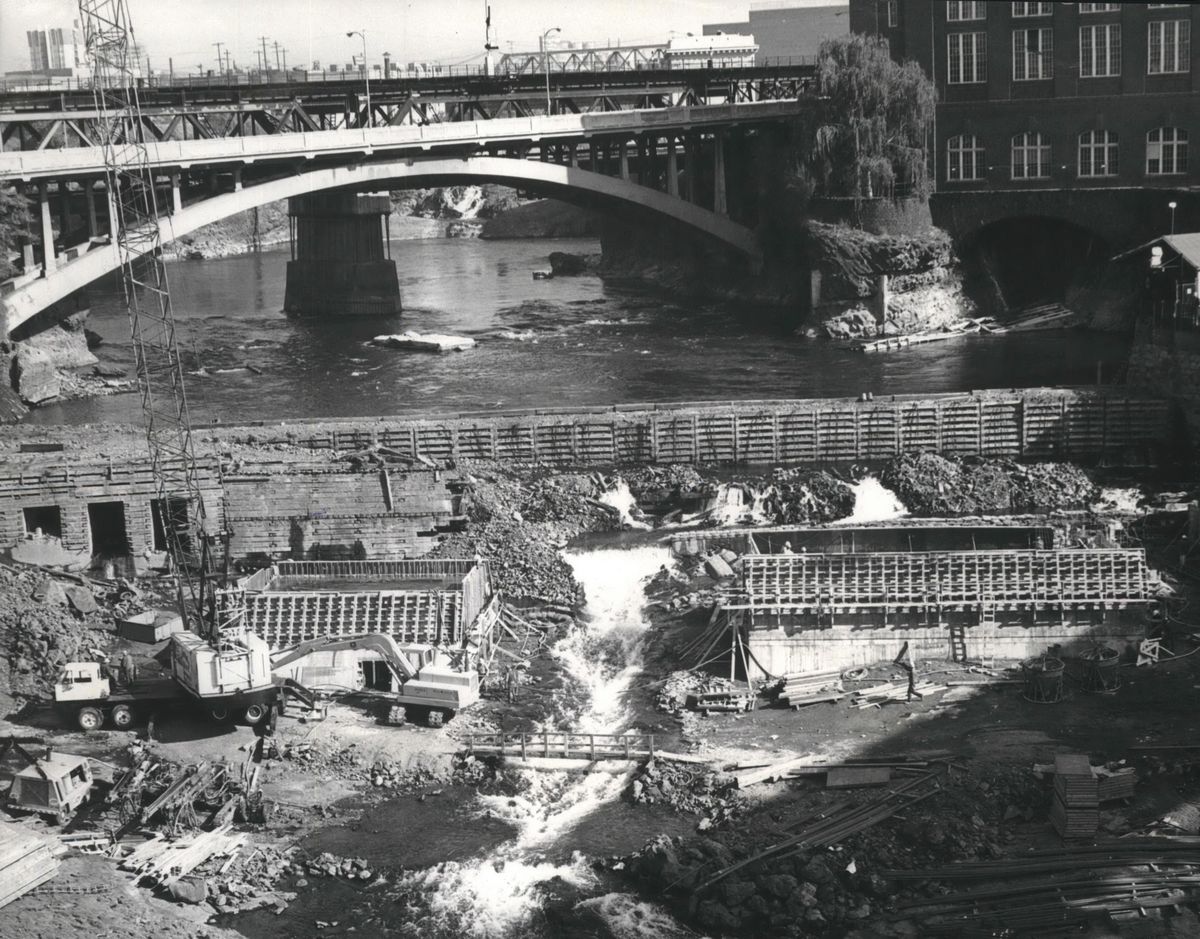Then and Now: The Monroe Street Dam

Ten investors signed the articles of incorporation for Washington Water Power Co. in March 1889. Other companies, including the Edison Electric Illuminating Co. of Spokane Falls, were already involved in power generation and there was no guarantee of success. WWP wanted to avoid the 30% royalty that Thomas Edison charged anyone who bought his generators. The Edison company had several investors in common with WWP.
The new company was strictly focused on creating some kind of generating facility using the downtown waterfalls. The founders sought financing from Wall Street backers in New York but were told that water power wasn’t practical. Edison himself preferred steam engines to drive generators.
WWP’s first major project was at the lower falls near Monroe Street. To transform the rocky cascade of water into a reliable power source, workmen built an 18-foot dam of rocks and timbers that would pool water above the intake of the power plant. Two giant pipes, called penstocks, carried the water downhill to the generators in the new powerhouse just below the Monroe Street Bridge. On Nov. 12, 1890, the head gates were opened and the Monroe Street Project began producing power.
By 1891, WWP had bought out the Edison company completely and also was buying up other competitors.
In spring 1972, heavy spring flows in the Spokane River blew out the aging spillway and repairs were started. The utility had to get a permit from the Federal Power Commission for the work. Eugene Albert, of the local Sierra Club, aligned with more than a dozen other environmental groups to oppose the rebuild, said a large concrete spillway, 40 to 50 feet farther downstream from the old one, would be ugly and unnatural.
The construction was eventually approved. The two penstocks were reduced to a single pipe and the area by the falls was landscaped and renamed Huntington Park after D.L. Huntington, the third president of the company. WWP was renamed Avista Utilities in 1999. The project was rebuilt again in the early 1990s. The single large generator was concealed below ground and the powerhouse was torn down.